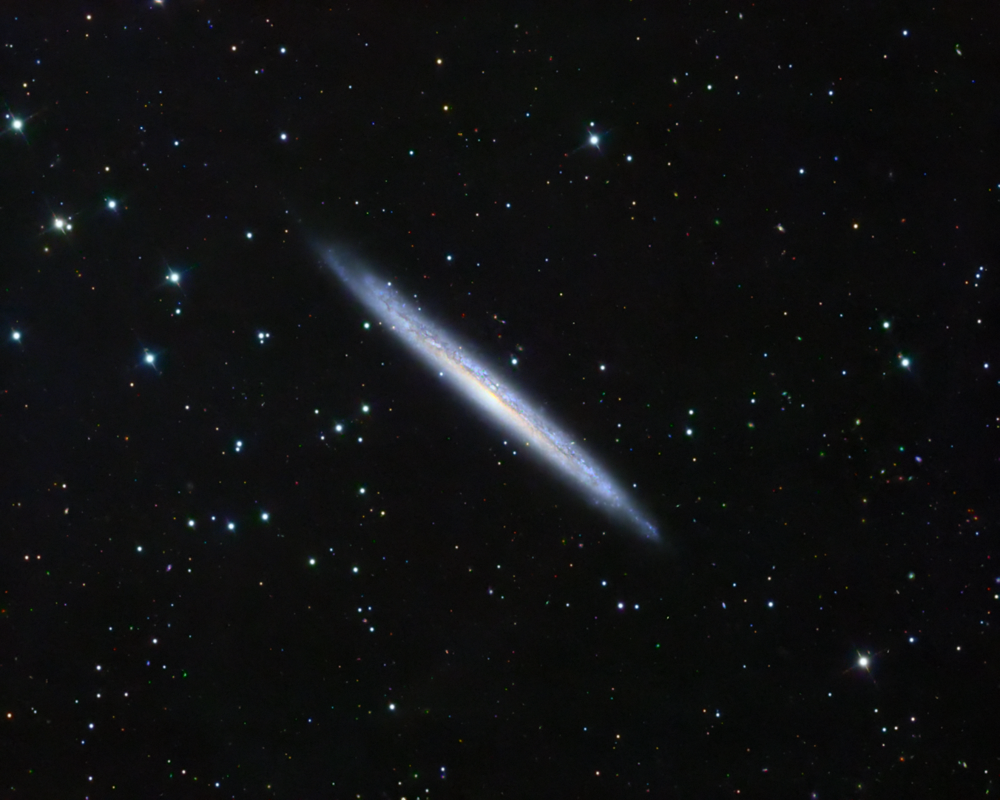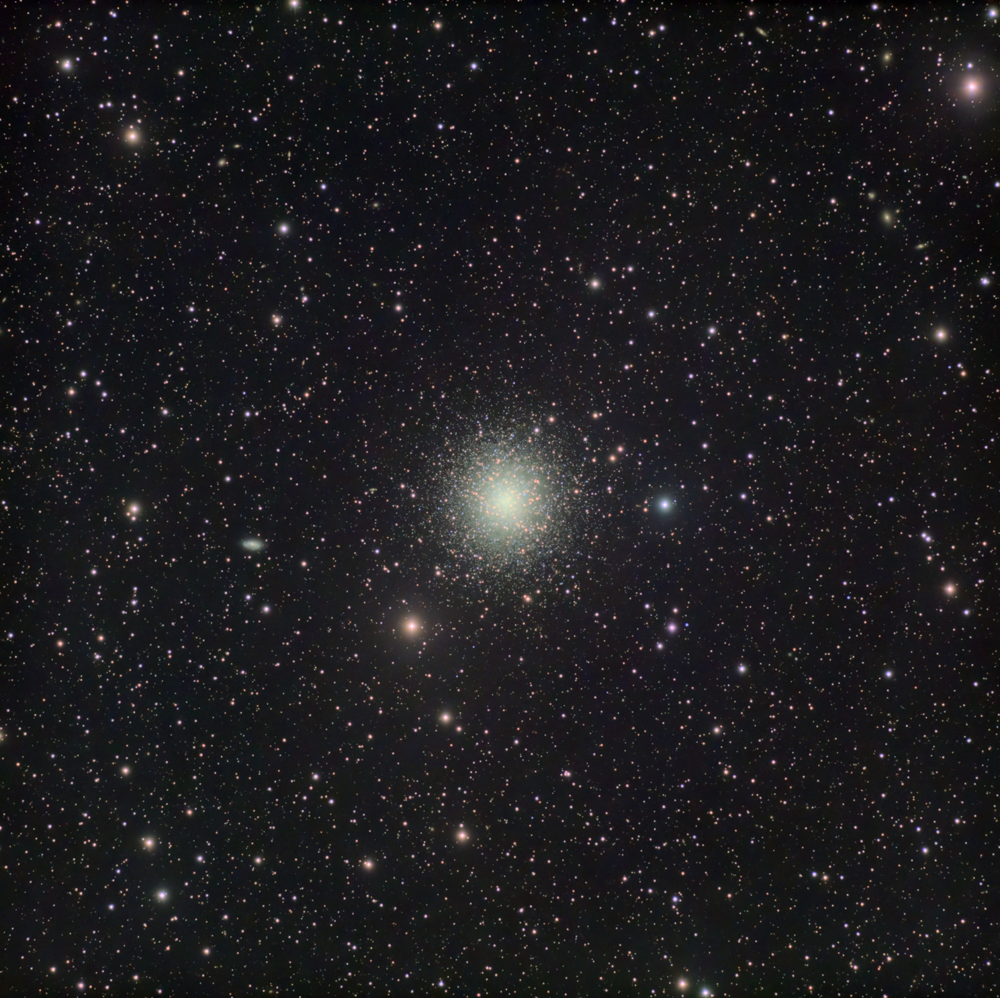It’s been a rough start to the year. We are nearly half-way through at this point, and the number of astro-imaging nights have been rather scant between the work schedule and the weather and that nemesis of deep-sky astrophotographers everywhere – the moon.
But recently, the skles cleared, the work schedule cooperated, the moon wasn’t full, and I got a couple more night of imaging in.
The first target was NCG 5907, a galaxy in the constellation of Draco. It is bit of an oddity, being composed almost entirely of dwarf stars.
This was taken using the AGO Optical 10″ iDK riding the Paramount MX+ and using the QSI camera with LRG filters. The total exposure time was 10:50 Hrs over 2 nights.

The second target was really a target of opportunity. Without getting too technical, I was fiddling with back-focus spacing on the optical train (which probably sounds like blah blah blah). This entailed taking things apart, adding or removing spacers and then testing the result. For over 2 hours. In the dark.
At the end when I was pretty happy with the spacing, I wanted to get some data to process and validate the result. I never intended to fully process the data set, but once I started it turned out to pretty good, so I just kept going. And I’m pretty happy with the final result. This was taken with a Skywatcher ES100 with a Starizona Apex reducer and a ZWO ASI 533MC-Pro camera. The total exposure time was 4:35 Hrs.

Serious wildfires in Calgary & Alberta are currently pushing smoke up into the Jetstream. This carries the smoke across the entire US and has resulted in an impenetrable haze covering the night sky. Which is quite incredible to consider. This has been impacting astronomy all the way over here on the east coast of the USA.
